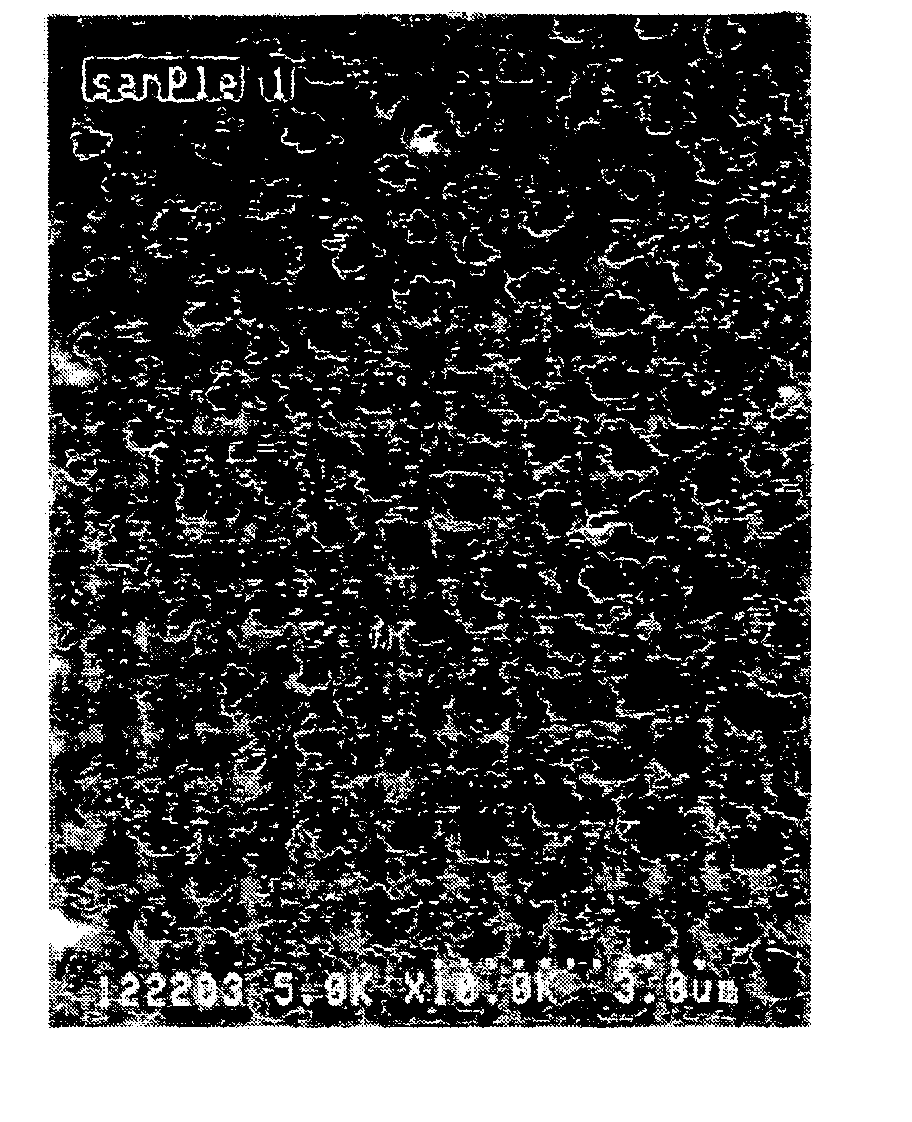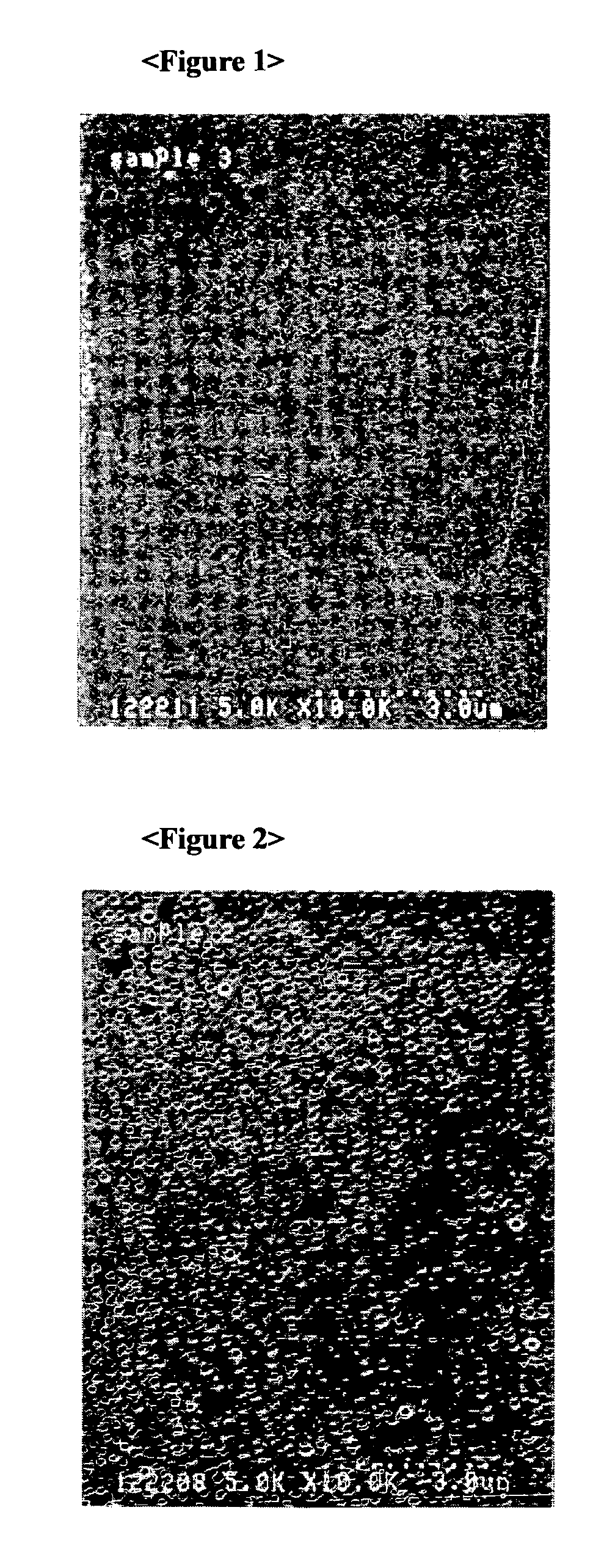Organosilicon compound
- Summary
- Abstract
- Description
- Claims
- Application Information
AI Technical Summary
Benefits of technology
Problems solved by technology
Method used
Image
Examples
example 1
Synthesis of Compound (3-1-1): Compound Represented by Formula (3-1) wherein R1 is phenyl, and M is Na
[0314] A reaction vessel having an internal volume of 50 liters and equipped with a reflux condenser, a thermometer and a stirring unit was charged with phenyltrimethoxysilane (6.54 kg), 2-propanol (26.3 liters), pure water (0.66 kg), and sodium hydroxide (0.88 kg) and then sealed with dry nitrogen. The mixture was heated while stirring and reacted in a reflux state for 5 hours. After completion of the reaction, a heater was removed from the reaction vessel, and the vessel was allowed to stand at room temperature for 15 hours, thereby cooling the reaction mixture. A supernatant was removed from the thus obtained reaction mixture by decantation. A white solid remaining in the reaction vessel was washed once with 2-propanol (9.87 kg). This was transferred into a polytetrafluoroethylene sheet-lined vat made of stainless steel and dried at an inside temperature of 80° C. under a pressu...
example 2
Introduction of trimethylsilyl group into Compound (A-1)
[0315] A 50-mL four-necked flask equipped with a reflux condenser was charged with Compound (A-1) (1.2 g), tetrahydrofuran (10 g), and triethylamine (1.6 g) and then sealed with dry nitrogen. Trimethylchlorosilane (2.2 g) was added dropwise over about one minute under stirring by a magnetic stirrer while keeping the solution temperature at 15° C. to 20° C. After completion of the dropwise addition, stirring was continued at 15° C. for 3.5 hours. After completion of the reaction, the reaction mixture was washed with pure water and dried in vacuo to obtain a white solid (1.2 g). This is designated as Compound (A-T).
[0316] Compound (A-T) was subjected to structural analysis by gel permeation chromatography (GPC), 1H-NMR, and 29Si-NMR. It was confirmed from a GPC chart that the white solid was monodispersed and had a number average molecular weight of 970 and a weight average molecular weight of 990 as reduced into polystyrene. I...
example 3
Synthesis of Compound (5-1): Organosilicon Compound Represented by Formula (5) wherein R1 is phenyl, and R2 is methyl
[0317] A three-necked flask having an internal volume of 300 mL and equipped with a dropping funnel, a thermometer, and a reflux condenser was charged with a stirrer, Compound (3-1-1) (11.6 g) as obtained by utilizing the method of Example 1, and tetrahydrofuran (100 g) and then sealed with dry nitrogen. Methyldichlorosilane (3.4 g) was added dropwise while stirring by the magnetic stirrer. After completion of the dropwise addition, stirring was continued at room temperature for one hour. After completion of the reaction, 50 g of pure water was charged to dissolve formed sodium chloride therein and also hydrolyze unreacted methyldichlorosilane. The thus obtained reaction mixture was transferred into the dropping funnel and separated into an organic layer and an aqueous layer. After washing the resulting organic layer with saturated salt water, water washing was repea...
PUM
| Property | Measurement | Unit |
|---|---|---|
| Length | aaaaa | aaaaa |
| Time | aaaaa | aaaaa |
| Pore size | aaaaa | aaaaa |
Abstract
Description
Claims
Application Information
 Login to View More
Login to View More - R&D
- Intellectual Property
- Life Sciences
- Materials
- Tech Scout
- Unparalleled Data Quality
- Higher Quality Content
- 60% Fewer Hallucinations
Browse by: Latest US Patents, China's latest patents, Technical Efficacy Thesaurus, Application Domain, Technology Topic, Popular Technical Reports.
© 2025 PatSnap. All rights reserved.Legal|Privacy policy|Modern Slavery Act Transparency Statement|Sitemap|About US| Contact US: help@patsnap.com



